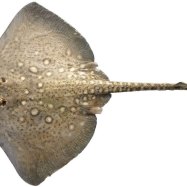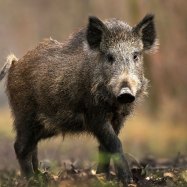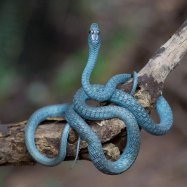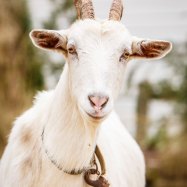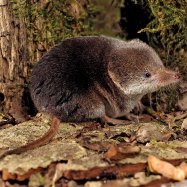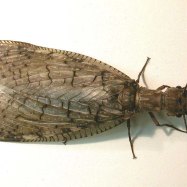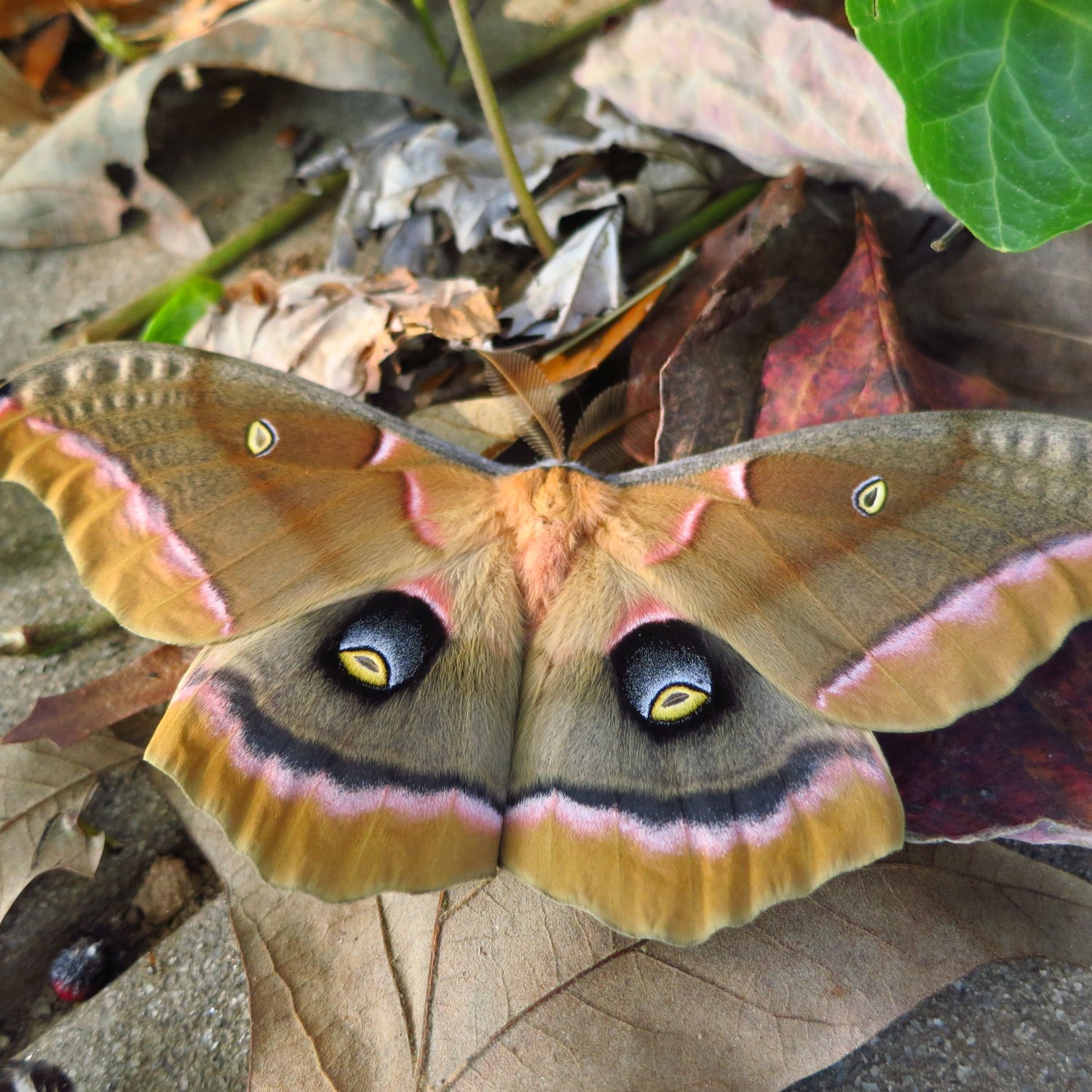
Polyphemus Moth
Up to 6 inches (15 cm)
The majestic Polyphemus Moth is a sight to behold with its large, stout body and broad wings. Growing up to 6 inches, it can be found in the eastern and central parts of the US. Belonging to the Saturniidae family, it is one of the largest moths in North America and is named after the cyclops from Greek mythology. #PolyphemusMoth #Saturniidae #MajesticMoth
Animal Details Summary:
Common Name: Polyphemus Moth
Kingdom: Animalia
Habitat: Deciduous forests, woodlands, orchards
The Fascinating World of the Polyphemus Moth: A Jewel in the Forest
In the depths of North America's deciduous forests, among the lush and vibrant foliage, a hidden jewel can be found fluttering gracefully through the air - the Polyphemus Moth. This magnificent creature, with its large and unique appearance, is a testament to the beauty and diversity of the animal kingdom.Also known by its scientific name, Antheraea polyphemus, this majestic moth belongs to the Kingdom Animalia, Phylum Arthropoda, and Class Insecta. It is part of the Order Lepidoptera, which includes butterflies and moths, and the Family Saturniidae, commonly known as the giant silk moths Polyphemus Moth. The Polyphemus Moth is one of the largest and most iconic species within this family, and it is no surprise why.
With a wingspan that can reach up to 6 inches (15 cm), the Polyphemus Moth is a large and impressive creature. Its stout body and broad wings are adorned with a stunning coloration of brown, tan, and white - creating an eye-catching and unique appearance. However, the most striking feature of this moth comes in the form of its four eye-like spots on each wing, which gives it a mythical and almost otherworldly appearance.
The Polyphemus Moth can be found throughout North America, from Canada to Mexico. However, its country of origin is the United States, where it is most commonly found in the eastern and central parts of the country. This vast distribution is due to the moth's adaptability to various habitats, making it a versatile and resilient species.
In terms of habitat, the Polyphemus Moth can be found in deciduous forests, woodlands, and even orchards. These lush and green environments provide the perfect home for this species, where it can thrive and fulfill its crucial role in the ecosystem Palm Rat.
The larvae of the Polyphemus Moth feed on a variety of deciduous trees, including oak, maple, birch, and willow. This species, like many other moths, is an essential pollinator and is responsible for helping to maintain the delicate balance of ecosystems. Without them, the reproduction and survival of many plant species would be at risk.
Aside from its vital role in the ecosystem, the Polyphemus Moth is a creature that has long captivated the hearts and minds of humans. Its unique appearance, behavior, and life cycle have made it a subject of fascination for scientists, nature lovers, and artists alike.
One of the most intriguing characteristics of the Polyphemus Moth is its life cycle, which is a remarkable example of nature's beauty and complexity. Like all moths and butterflies, the Polyphemus Moth goes through four distinct stages of metamorphosis - egg, larva, pupa, and adult.
Female moths lay their eggs on the underside of leaves, where they will remain until they hatch into larvae, also known as caterpillars. The Polyphemus Moth larvae are large, green, and hairy, and they have a voracious appetite. They will spend most of their larval stage feeding on leaves and growing in size until they are ready to pupate.
Once ready, the caterpillar will spin a silk cocoon around itself, where it will transform into a pupa. This stage can last anywhere from two weeks to a year, depending on the environmental conditions. The cocoon protects the pupa as it undergoes an incredible transformation, emerging as a fully-grown adult moth.
The adult Polyphemus Moth has a relatively short lifespan of only one to two weeks, where its sole focus is to reproduce. The males, with their large and bushy antennae, will use their keen sense of smell to locate a female and mate. After mating, the females will lay their eggs, and the cycle begins again.
The Polyphemus Moth is not only fascinating for its unique life cycle, but it is also a species that has captured the attention of the scientific community. Its eyespot markings on its wings have long been a subject of study and are believed to serve as a defensive mechanism against predators. The large spots may disrupt the moth's overall shape, making it appear larger and more substantial than it is - deterring potential predators.
However, the eyespots are not the only tool the Polyphemus Moth has to protect itself. Like most insects, it also has the ability to camouflage itself, blending in with its surroundings and making it less visible to predators. This combination of strategies has allowed the Polyphemus Moth to thrive and survive in its natural habitat.
Aside from its unique visual defenses, the Polyphemus Moth is also an animal of great importance in terms of its potential to contribute to advancements in science and technology. Its silk is highly valued for its strength and durability and is being studied as a potential material for use in industries such as medicine and electronics. The silk produced by the Polyphemus Moth is stronger than steel and is resistant to high temperatures, making it a valuable resource for innovation and progress.
In conclusion, the Polyphemus Moth is a creature that is as captivating and beautiful as it is valuable and essential to our ecosystem. Its large and unique appearance, combined with its role in the balance of nature and potential for scientific advancements, makes it a truly remarkable species. So the next time you find yourself in a forest or woodland, take a moment to appreciate the beauty and wonder of this magnificent moth as it flutters its way through the trees, reminding us of the incredible diversity and complexity of the animal kingdom.

Polyphemus Moth
Animal Details Polyphemus Moth - Scientific Name: Antheraea polyphemus
- Category: Animals P
- Scientific Name: Antheraea polyphemus
- Common Name: Polyphemus Moth
- Kingdom: Animalia
- Phylum: Arthropoda
- Class: Insecta
- Order: Lepidoptera
- Family: Saturniidae
- Habitat: Deciduous forests, woodlands, orchards
- Feeding Method: Larvae feed on a variety of deciduous trees
- Geographical Distribution: North America, from Canada to Mexico
- Country of Origin: United States
- Location: Eastern and central parts of the United States
- Animal Coloration: Brown, tan, and white with eye-like spots on the wings
- Body Shape: Large, stout body with broad wings
- Length: Up to 6 inches (15 cm)
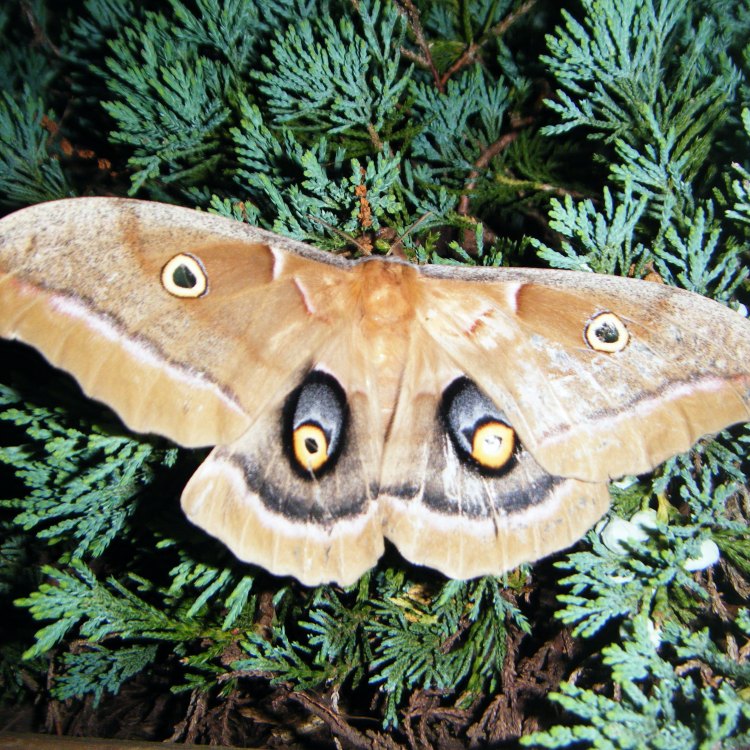
Polyphemus Moth
- Adult Size: Wingspan of 4-6 inches (10-15 cm)
- Average Lifespan: 1-2 weeks
- Reproduction: Sexual reproduction
- Reproductive Behavior: Mating occurs at night, females lay fertilized eggs
- Sound or Call: Does not make sound or call
- Migration Pattern: Do not migrate
- Social Groups: Solitary
- Behavior: Nocturnal, attracted to light sources
- Threats: Habitat loss, pesticide use, predation
- Conservation Status: Not evaluated
- Impact on Ecosystem: Play a role in pollination and as a food source for predators
- Human Use: Not used extensively by humans
- Distinctive Features: Large size, eye-like spots on wings, silken cocoon
- Interesting Facts: Females release a pheromone to attract males, larvae spin cocoons
- Predator: Birds, bats, spiders
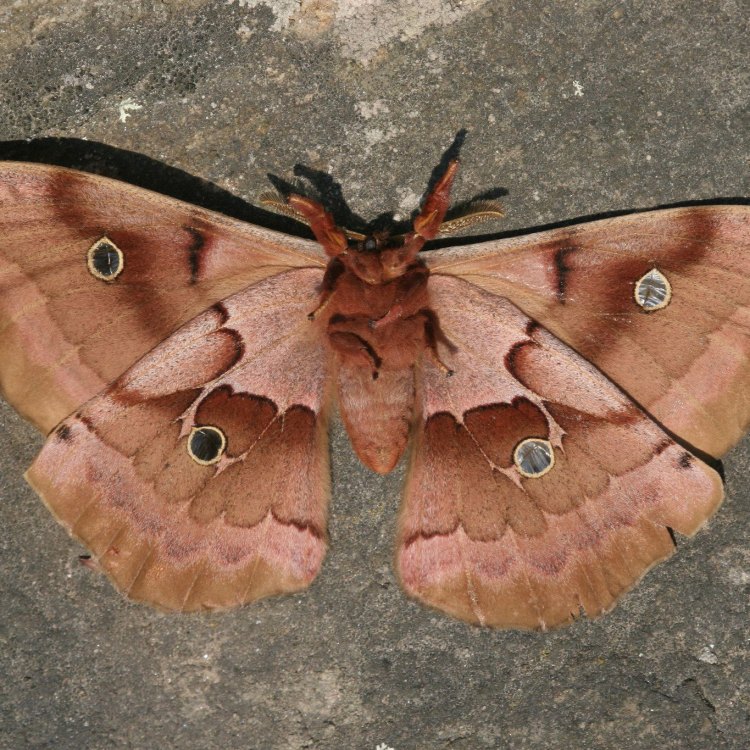
Antheraea polyphemus
The Magnificent Polyphemus Moth: A Beautiful and Short-Lived Wonder of Nature
Nature is full of wondrous creatures, big and small, that capture our attention with their unique features. But among all the creatures in the insect world, there is one that stands out with its striking size and appearance - the Polyphemus Moth.Native to North America, the Polyphemus Moth (Antheraea polyphemus) is a member of the Saturniidae family, also known as giant silk moths. It is often referred to as one of the most beautiful and majestic insects in the region, with a wingspan of 4-6 inches (10-15 cm) making it one of the largest moths in North America PeaceOfAnimals.Com.
But despite its grandeur, the Polyphemus Moth has a short lifespan of only 1-2 weeks, making it a fleeting wonder of nature. In this article, we will dive into the unique features and behaviors of this magnificent moth, as well as its role in the ecosystem and its relationship with humans.
The Life of a Polyphemus Moth
The Polyphemus Moth goes through four stages in its life cycle: egg, larva, pupa, and adult. Adult moths emerge from their cocoons in late spring to early summer. They are most commonly found in forests, woodlands, and suburban areas where their host plants grow.The moths are sexually dimorphic, meaning males and females differ in appearance. Males are typically smaller with more feathery antennae, while females have larger bodies and thicker antennae. Both have brown wings with a distinctive dark purple or pink eye-like spot on each forewing.
As adults, these moths have an average lifespan of 1-2 weeks Pelagornithidae. Their sole purpose during this short period is to reproduce. Mating occurs at night, with the female releasing a pheromone to attract males. After mating, the female lays her fertilized eggs on the leaves of the host plant, which are then left to hatch into caterpillars.
A Nighttime Romance and Solitary Living
As mentioned earlier, mating for the Polyphemus Moth occurs at night. Male moths use their feathery antennae to detect the pheromones released by females. Once they have found a mate, they will remain coupled for several hours.Unlike other insect species, Polyphemus Moths do not form social groups or colonies. They are solitary creatures and do not interact with other individuals except for mating. After laying her eggs, the female moth will die, and the male will only live for a few more days before dying as well.
Surviving in the Dark
The Polyphemus Moth is primarily a nocturnal creature, meaning it is active at night. This behavior allows them to avoid predators and use the darkness as cover while they search for a mate or host plants.But their attraction to light sources can sometimes lead them to danger. Many moths are drawn to bright lights, and they can become disoriented and end up exhausting themselves before being able to mate or find a suitable place to lay their eggs.
Furthermore, this behavior also puts them at risk of being preyed upon by nocturnal predators such as birds, bats, and spiders. This is why it is essential to be mindful when using outdoor lighting, especially during the moth's breeding season.
Threats to the Polyphemus Moth
Like other insect species, the Polyphemus Moth faces threats to its existence. The main threats to its survival are habitat loss, pesticide use, and predation.Deforestation, urbanization, and agriculture have significantly reduced the moth's natural habitat. As a result, their host plants, such as oak and maple trees, are also declining. This loss of habitat leaves the moths with fewer places to lay their eggs and ultimately impacts their population.
Pesticides used in agriculture and residential areas also threaten the life cycle of the Polyphemus Moth. These chemicals can contaminate their host plants, killing larvae and affecting their development.
Additionally, predation is a significant concern for these moths, especially during the larval stage. Birds, bats, and spiders are common predators of Polyphemus Moth caterpillars, making it challenging for them to reach their full adult form.
The Role of Polyphemus Moths in the Ecosystem
Polyphemus Moths may have a short lifespan, but they play a vital role in their ecosystem. As adults, they act as pollinators, helping to transfer pollen from one plant to another. This process is crucial for the reproduction of many plant species.Furthermore, as caterpillars, they serve as a food source for many predators, contributing to the balance of the food chain. Without these large and impressive moths, the ecosystem would suffer from a lack of pollination and a disruption in the food chain.
Human Interaction with the Polyphemus Moth
Humans do not interact extensively with the Polyphemus Moth. Unlike other moth species, they are not used for silk production or as a food source. Their larvae do not cause significant damage to crops and are rarely seen in gardens. However, they can be viewed as a gardener's friend, as they act as natural pest control by attracting predators to their host plants.Despite not having a direct impact on humans, the Polyphemus Moth is still a unique and beautiful creature that adds to the biodiversity of our world. It is crucial to protect their natural habitat and educate others on their role in the ecosystem to ensure their survival.
Distinctive Features of the Polyphemus Moth
The Polyphemus Moth has many unique features that make it stand out from other moth species. Its most distinctive feature is its large size, with a wingspan of 4-6 inches (10-15 cm), making it one of the largest moths in North America.But the real standout feature of this moth is the eye-like spots on its wings. These spots are a defense mechanism, designed to deter predators by mimicking the eyes of much larger animals. When these large spots are seen, birds and other predators may mistake the moth for a much larger creature, causing them to hesitate or avoid attacking altogether.
Lastly, the Polyphemus Moth is known for its silken cocoon. The caterpillars spin these cocoons from their own silk before entering the pupal stage. These cocoons are durable and can protect the pupa as it transforms into an adult moth.
Interesting Facts about the Polyphemus Moth
Aside from its distinctive features, there are many interesting facts about the Polyphemus Moth that make it a fascinating creature to learn about.For one, the caterpillars of these moths have a unique camouflage technique. They have spiny projections all over their body that blend in with the color and texture of their host plants, making them hard to spot by birds and other predators.
Furthermore, these caterpillars have a cooperative behavior when it comes to spinning their cocoons. They often look for a nearby partner to spin their cocoons next to, creating a collective group of cocoons that may provide more protection against predators.
The larvae of the Polyphemus Moth also have a peculiar defense mechanism. When startled, they will suddenly raise their front end and sway back and forth, mimicking the movements of a snake.
In Conclusion
The Polyphemus Moth may only have a short lifespan, but its unique features and behaviors make it a magnificent wonder of nature. From its large size and eye-like spots to its nocturnal behavior and cooperative cocoon spinning, this moth is truly a fascinating creature.However, like many other species, the Polyphemus Moth faces threats to its existence, such as habitat loss and predation. As humans, it is our responsibility to protect and preserve these creatures, not only for their own sake but for the health of our ecosystem as well.
So next time you see a Polyphemus Moth fluttering around a light source, take a moment to appreciate its beauty and remember its significance in our natural world.
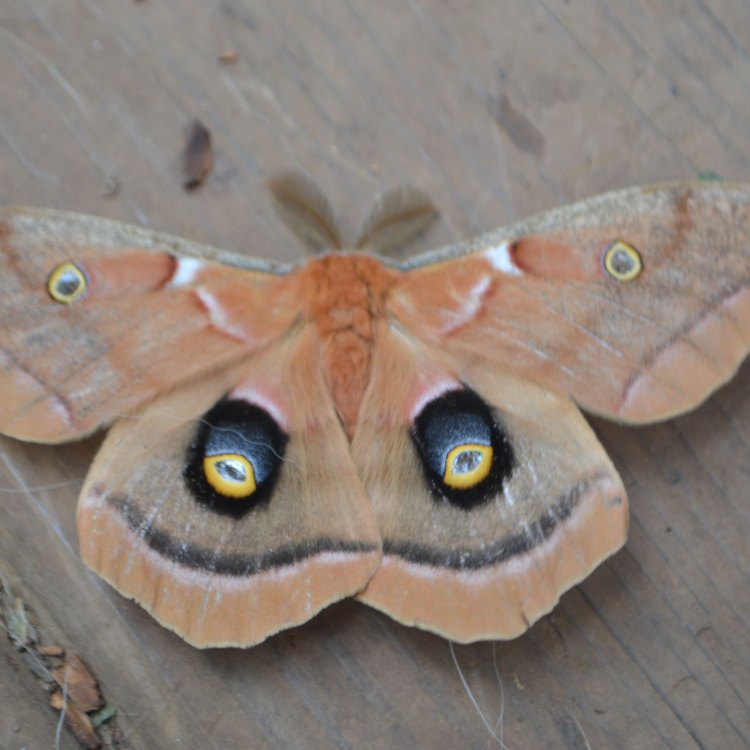
The Fascinating World of the Polyphemus Moth: A Jewel in the Forest
Disclaimer: The content provided is for informational purposes only. We cannot guarantee the accuracy of the information on this page 100%. All information provided here may change without prior notice.



